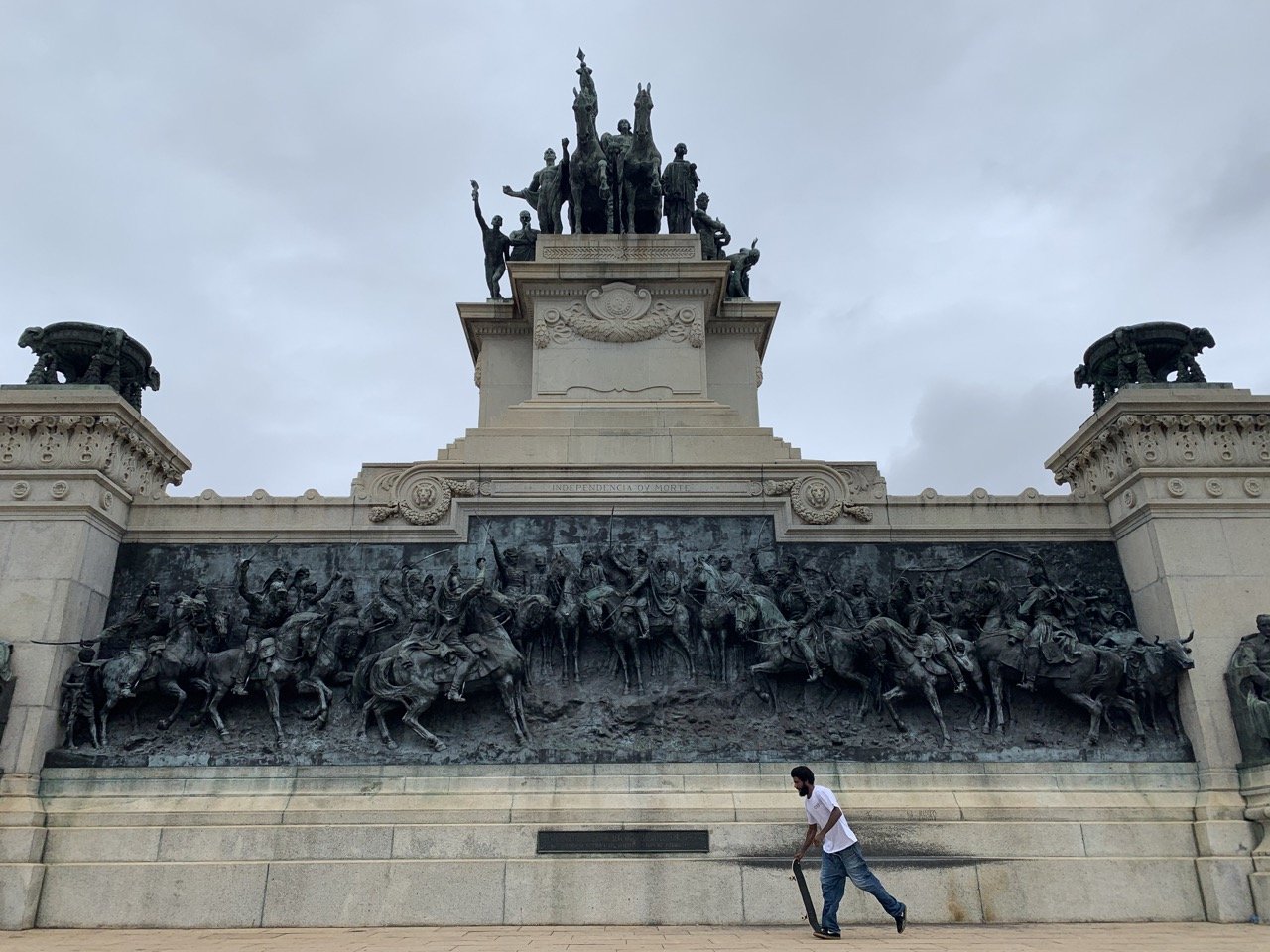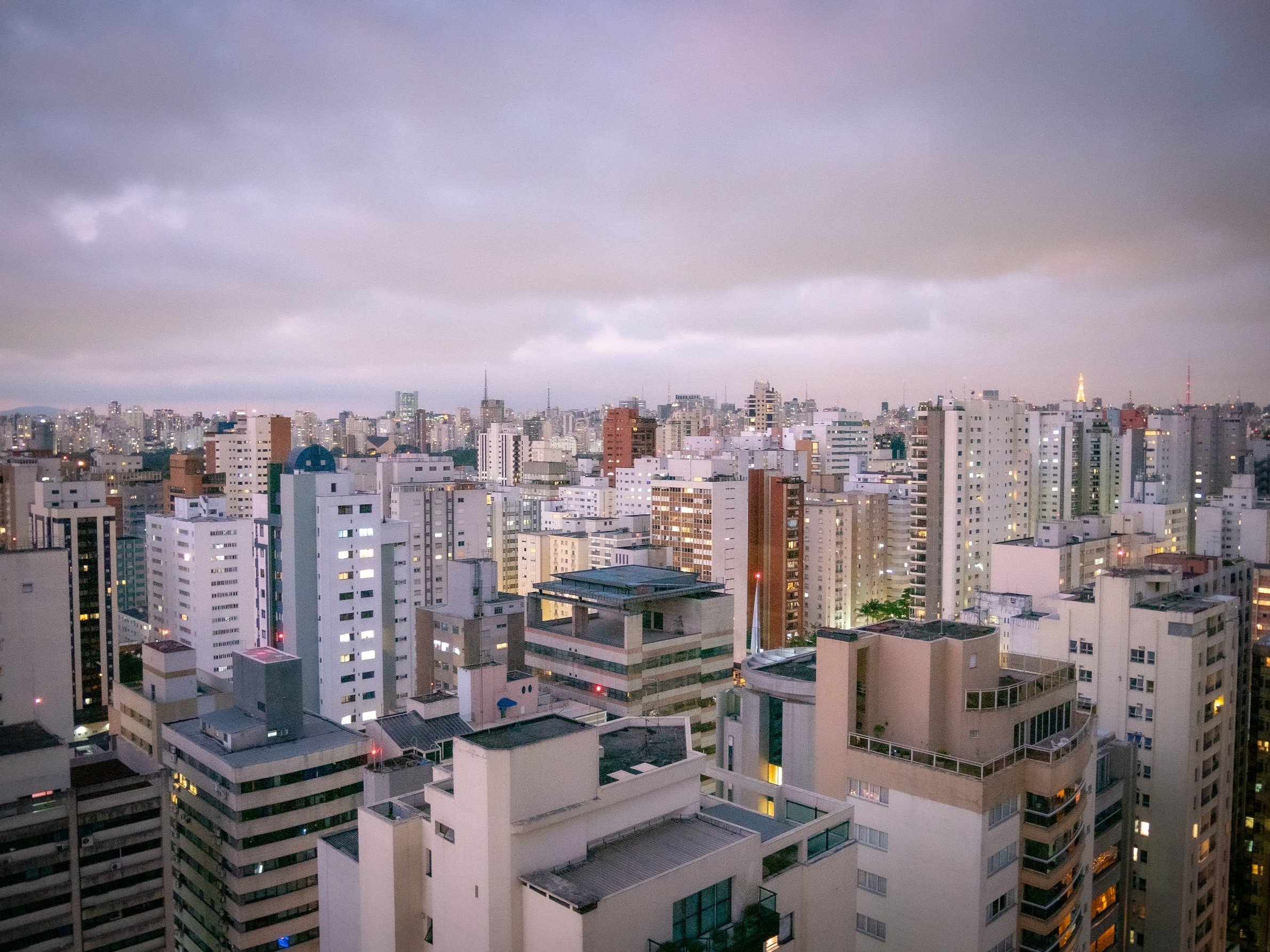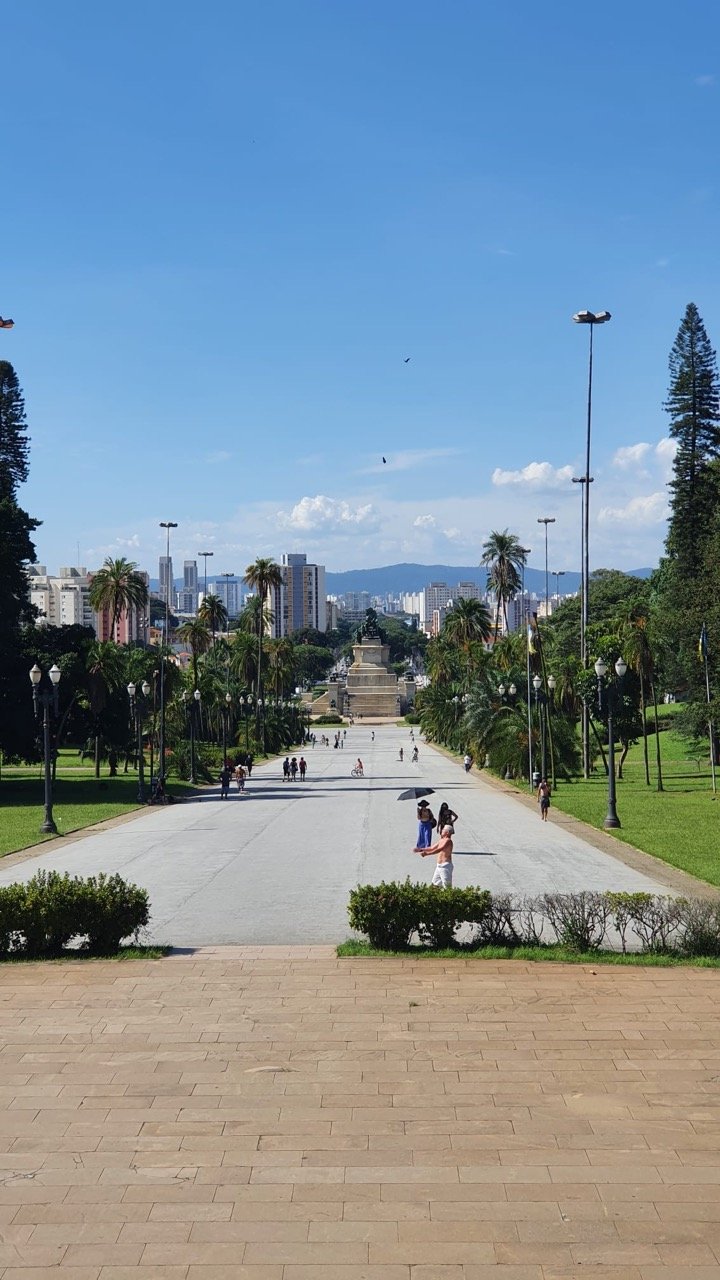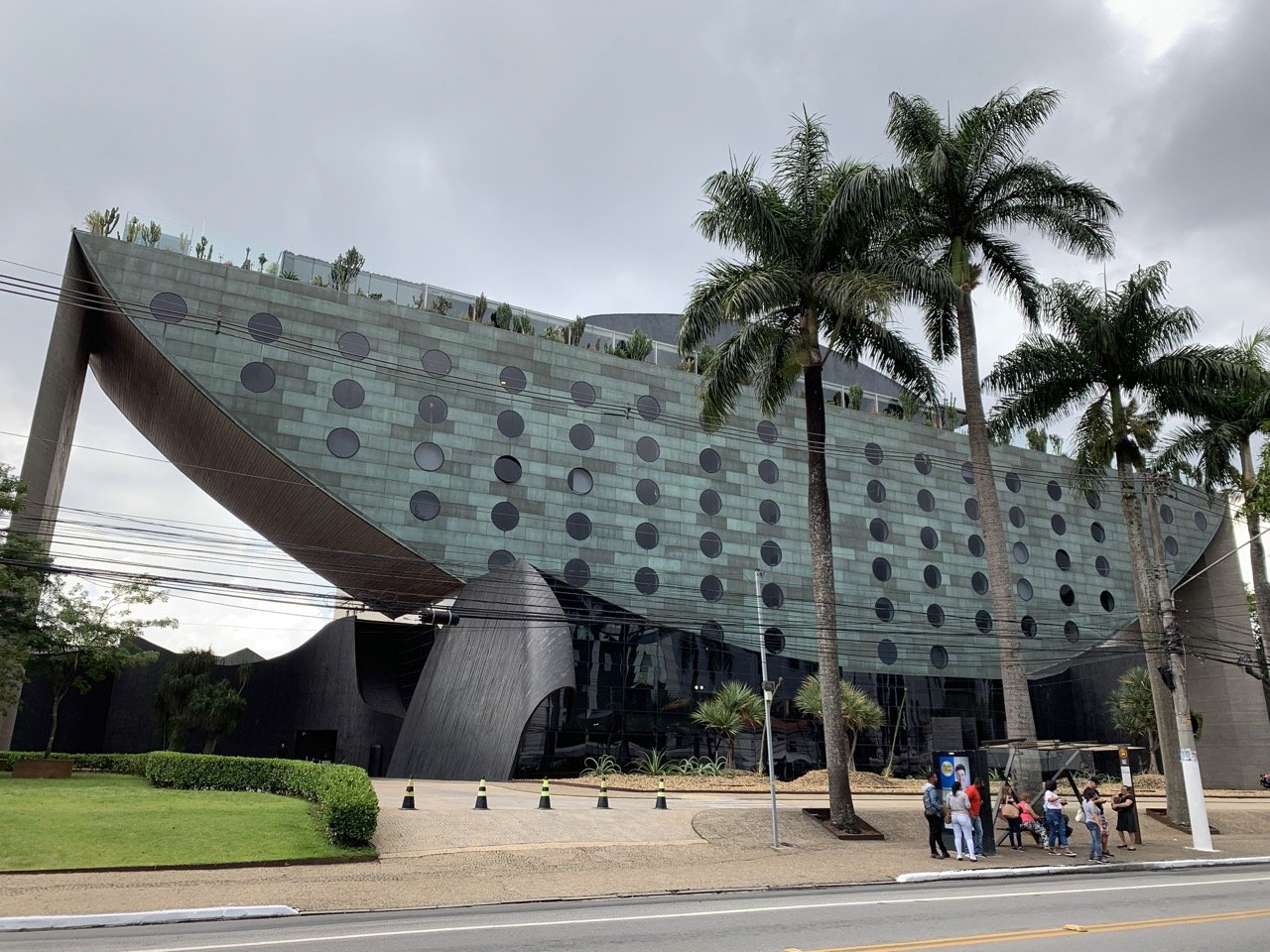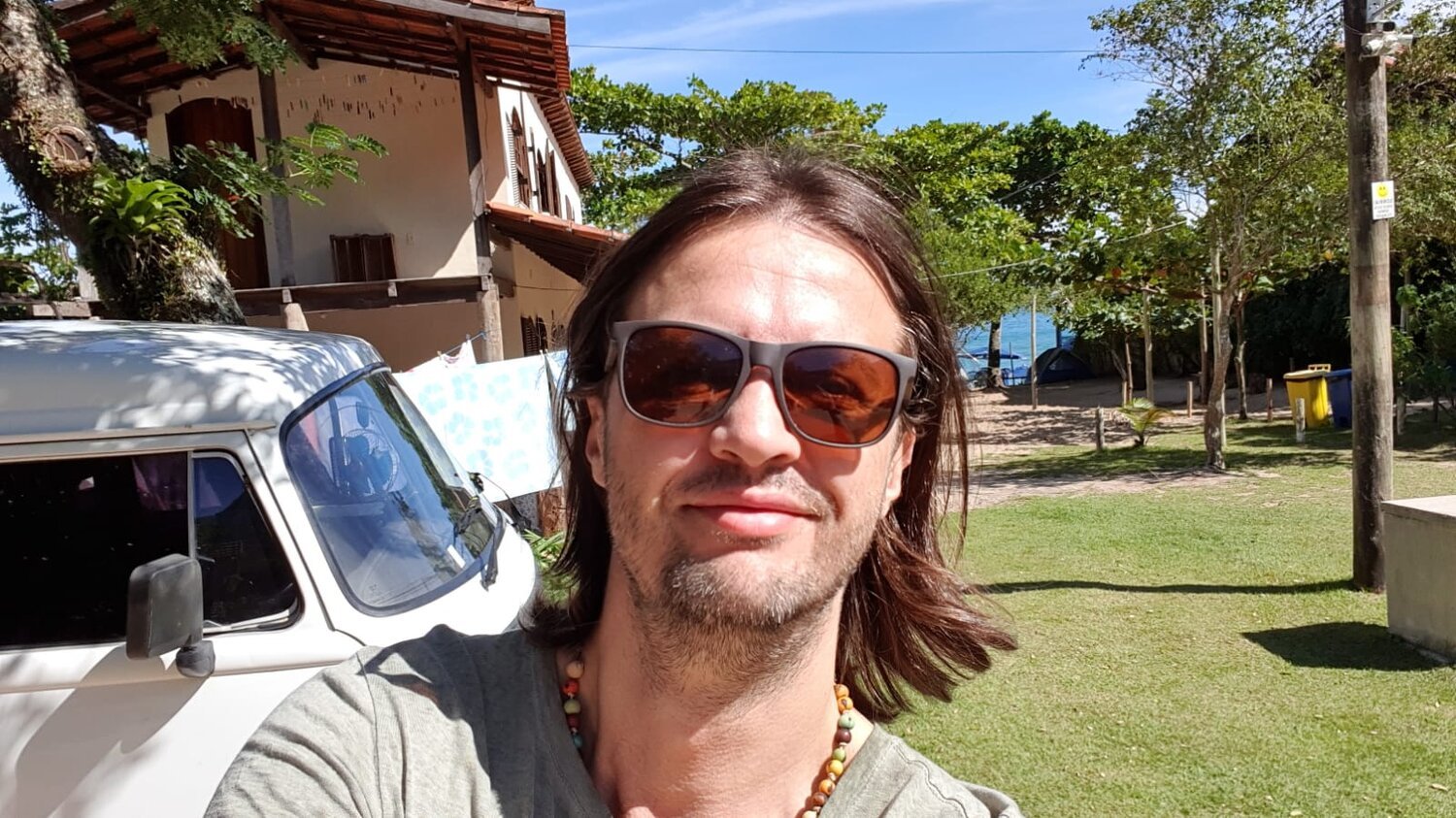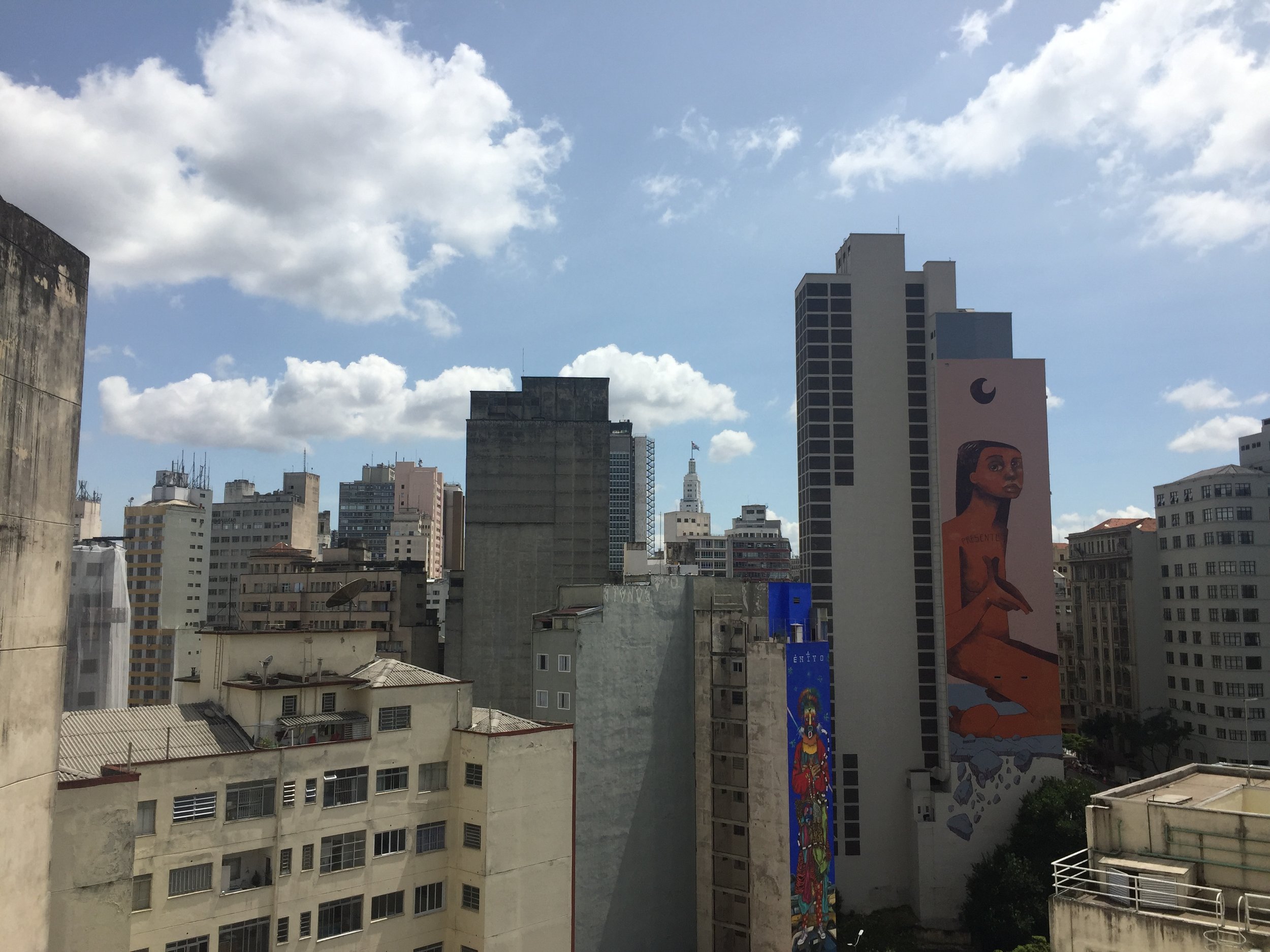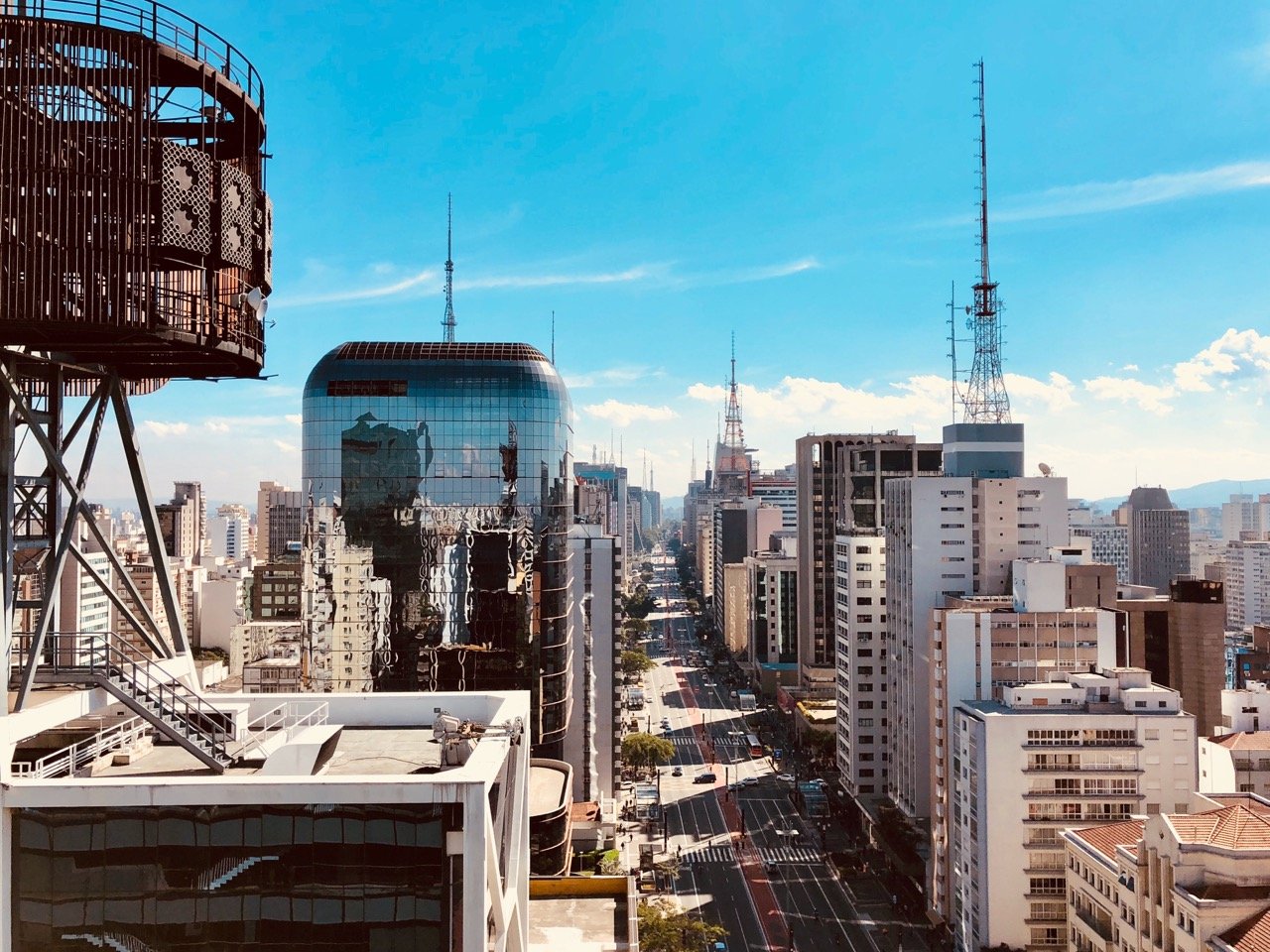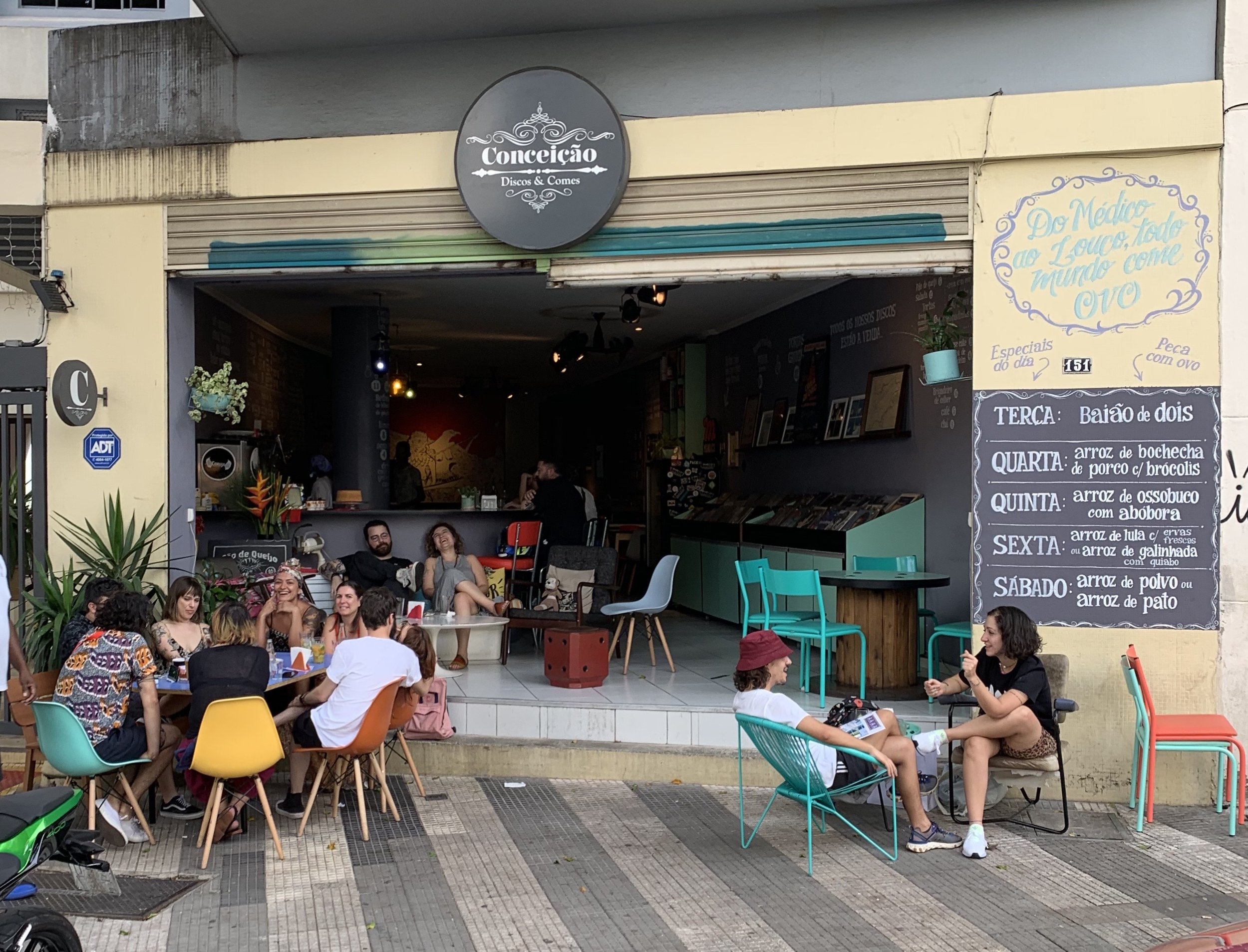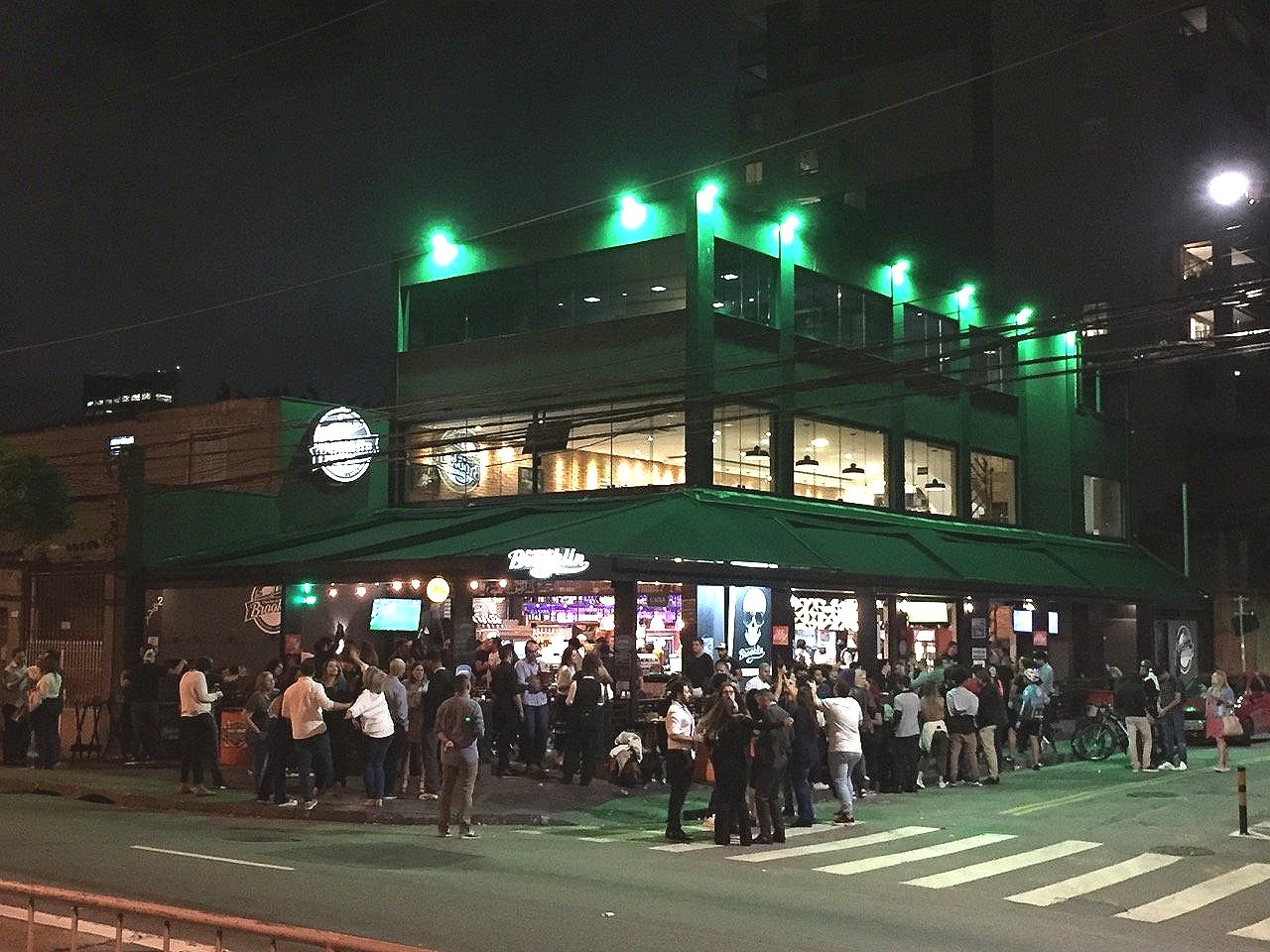A Local’s Guide to São Paulo, Brazil
São Paulo is a country within a country. It is Brazil’s economic epicenter and the nation’s financial, industrial, and cultural capital.
Its 12 million inhabitants (22 million if you count the metro area), known as Paulistanos, are proud of their reputation as an industrious and serious bunch and consider their city as something distinct from the rest of Brazil. They’re not wrong.
The size of the city borders on absurd. When flying into Congonhas airport (the domestic airport in the Campo Belo neighborhood), the high rises stretch on for almost 20 minutes of flight; the horizon practically lost in the enormous sea of apartment towers. Landing here is a tourist attraction in its own right.
Once on the ground, you’ll feel the city pulse with an infectious energy as you marvel at the sheer volume of humanity going about their daily business, a mass of traffic, motorcycles, buses, trains, cars, and an ever-growing population of cyclists all competing for space.
São Paulo, or Sampa as we locals call it, definitely earns its status as a serious city for business. Unfortunately, the resulting development and urban sprawl does mean that on the surface the city can feel ugly, overwhelming, and chaotic. But don’t be fooled. While the endless corporate towers and high rise condominiums might give an impression of a place committed to all work and no play, nothing could be further from the truth.
Read on for my detailed guide to visiting Brazil’s largest city, my hometown!
More Brazil travel info
For more ideas on travel in São Paulo, check out my guide to 25 things to do in São Paulo and my list of the best restaurants in Sampa.
If you could use some one-on-one help planning your visit, schedule a Brazil travel consultation with me!
Table of Contents
History of São Paulo
Where is São Paulo?
Why visit
When to go
How long to spend
Where to stay
Costs & expenses
Transportation and how to get around
What to see & do in São Paulo
Food and Dining
Nightlife
Art and Culture
Safety


Local help with your planning
If you’re planning a trip to Brazil and could use some help figuring out a great plan, schedule a Brazil travel consultation with me!
These are one-hour Zoom calls where we can chat about the trip you’re planning and I’ll share my tips and advice, answer your travel questions, and help you perfect your itinerary.
A [very] brief history of São Paulo
Skateboarders in front of the Pátio do Colégio
São Paulo is the capital of São Paulo state and by far the largest city in Brazil. The city itself has a population of over 12 million people, while the greater metropolitan area (which includes adjacent cities like São Caetano, São Bernardo, and Santo Andre) is home to more than 22 million. This is a megalopolis unlike any other in South America.
Early history: Officially founded in 1554, for the first 300 years of its history São Paulo was little more than a tiny, isolated outpost on a high plateau separated from the coast by the practically impenetrable Serra do Mar mountains.
Jesuits: The Jesuits first came here to proselytize and minister to the small population of Portuguese, Indigenous, and mestizo inhabitants. Later, explorers, slave traders, gold hunters, and adventurers, collectively referred to as the Bandeirantes, would use São Paulo as their base for expeditions pushing ever further west into the interior.
Coffee boom: It was not until the mid 1800’s that wildly lucrative coffee exports, made possible by a rail connection with the port city of Santos, transformed the city and put it on its path to becoming Brazil’s financial, commercial, and industrial capital.
A monument to commemorate Brazil’s independence in Parque da Independencia
Foreign immigration: Coinciding with the boom in coffee exports, the period between 1890 and 1920 saw explosive population growth, mainly in the form of new immigrants.
These economic migrants came primarily from Italy and other parts of Europe, as well as Japan and the Middle East (Lebanon and Syria primarily). While millions made their homes in São Paulo, many more immigrants passed through the city’s migrant processing centers on their way to the countryside, in search of employment on the coffee plantations.
Domestic immigration: The city has, of course, not only been formed by external migration. Beginning in the middle of the 20th century, millions of mostly black Brazilians from the impoverished Northeast of the country made their way to the nation’s southern cities, São Paulo chief among them. They came to São Paulo to escape extreme rural poverty and in the search for better opportunities in the farms and factories of urban, industrial Brazil.
Modern day São Paulo: The population of the city in this timeframe grew from a modest 60,000 to a staggering 600,000. Through the 1960’s vast numbers of migrants continued to arrive from all over the world. More recent decades have seen the arrival of significant populations of Koreans, Chinese, Bolivians, Peruvians, and people from various African countries, adding to the city’s already kaleidoscopic diversity.
Evidence of this migration is most easily perceived by observing the racial makeup of the city, but also through the thousands of Northern and Northeastern restaurants, bars, and stores, cultural centers, many Candomblé centers of worship, musical influences, and much more.
Brazil in general is a melting pot of races, ethnicities, cultures, and nationalities, but São Paulo takes it to an almost insane degree. The city is so much better for it.
Where is São Paulo?
São Paulo city is located within the greater state of São Paulo in southeastern Brazil.
It is 430 km (270 miles) south of Rio de Janeiro and it lies about 60 km inland from the coast, separated from the sea by the formidable, Atlantic Rainforest-covered Serra do Mar mountains.
If driving, it’ll take you a little over 5 hours to get to Rio. By bus, figure on the journey taking around 6 hours.
The quickest way to get between Rio and São Paulo is to take the 1-hour flight.
If flying, note that each city has 2 airports, and in both cases the domestic airports are much more convenient. When booking flights, you want Santos Dumont (SDU) in Rio and Congonhas (CGH) in São Paulo.
Why visit São Paulo
São Paulo’s endless high rises at dusk
Overshadowed by iconic destinations like Rio de Janeiro, Iguazu Falls, and Salvador, it’s fair to ask “is São Paulo worth visiting?” While a bit complicated, the answer is a definitive yes! With a bit of effort, São Paulo reveals itself as a city with something to enthrall every taste and traveler.
Sampa boasts a world class food scene, hundreds of art and cultural institutions, unrivaled nightlife, interesting architecture, killer street art, fascinating neighborhoods of immigrant groups and their descendants, and thousands of live music events every week ranging from heavy metal to house. Not to even mention a populace of friendly, helpful, and exceedingly attractive people.
This is a destination perfect for culture vultures, urban explorers, and discerning travelers who want to see a Brazilian megacity without all the tourist trappings.
While building a Brazil trip around São Paulo as your primary destination probably doesn’t make sense, it is an outstanding place to visit for a few days and should be included in every Brazil itinerary. One thing you won’t find though is the beach. Or much green space. But for that, pack your bags and head off for Rio, Salvador, Floripa, or just about anywhere else in the country!
This guide is admittedly pretty long, so if you’re in a rush and just want the quick and dirty on what to see and do in the city, check out my guide to 35 Things to See & Do in Sampa.

Connect with a Brazil travel expert for help perfecting your itinerary, answers to all your travel questions, and fabulous local tips for a better visit!
When to visit São Paulo
A summer day in Parque da Independência in the Ipiranga neighborhood
Best time to visit: Fall and spring (March-May and September-November)
The best time of year to visit São Paulo is certainly September through November or March through May. These months are mostly dry with mild temperatures and there are few major events on the calendar, meaning that prices are reasonable and you won’t encounter huge crowds.
São Paulo, unlike Rio or Salvador, doesn’t receive enough leisure tourists to have a high or low season, but that doesn’t mean that you should just pick a month and come.
Visiting during the holidays: Christmas, New Year, and Carnaval
For most Brazilians, opinion is divided over whether you should come for, or avoid like the plague, dates with major festivities (like New Year or Carnaval).
Regardless, you should expect prices to double or triple during these dates and for most major Brazilian cities to be in full party mode (i.e. extra chaotic!).
Something unique to São Paulo to consider is that a large portion of the city’s residents are originally from other parts of the country and many of them choose to take long public holidays and summer vacations to get out of São Paulo, heading for their home states, the countryside, or the beach.
The effect is that during the summer and around festivities the city actually empties, becoming a bit of a ghost town.
Visiting in summer: December to February
Summer in Brazil can be hot and wet all over the country and it’s high season for domestic tourism. Because São Paulo isn’t really a tourist destination for Brazilians, these are fairly dead months here as much of the population escapes from the city and few people come to visit.
Visiting in winter: May to September
Visiting São Paulo in winter doesn’t make much sense. While temperatures are quite mild compared to the northern hemisphere (the coldest days will rarely see temps drop below 50°F - 10°C), it can be grey, rainy, and rather dreary.
You do get plenty of winter days with warm weather and bright blue skies, but São Paulo is known as the city of “garoa” (rain drizzles) for a reason. Unless you have to be here in winter, it’s just not the best time to come.
Visiting during Carnaval
If you’re considering a visit to São Paulo for Carnaval, don’t expect festivities anything close to the level of Rio or Salvador. That said, the city is starting to come into its own and finally embrace the party. Carnaval celebrations have gotten better year after year.
You don’t have the same scale of mindbogglingly massive blocos (block parties) as other cities, but you’re still sure to find hundreds of boisterous parties all over.
How long to spend in São Paulo
For most first-time visitors, 2-3 days is usually the right amount of time to spend in São Paulo.
The fact is, many people just visit for a day or on a long layover on their way to somewhere else. And you can realistically see most of the highlights in a day.
But for those who do stick around, 3 days will let you see all the city’s main sights and give you some time to explore the nightlife, food, and music scenes.
Unless you have specific interests that are bringing you to São Paulo or have a very flexible schedule for the rest of your Brazil trip, I wouldn’t recommend staying for more than 3 days. While I love São Paulo, the truth is that if this is your first visit to Brazil (or a short one), your time is mostly better spent elsewhere.
For tourism, São Paulo simply can’t compete with places like Rio and Salvador or any of the country’s fabulous national parks.
Now, if this is a repeat visit to Brazil or you have more time, you could consider extending your stay up to 5 days so that you can take in more of the fabulous art, food, culture, and architecture all around you.
Where to stay in São Paulo
Itaim Bibi’s exceedingly unique Hotel Unique!
For the vast majority of visitors, the best part of São Paulo to stay in is on or near to Avenida Paulista or in the adjacent neighborhoods of Jardins, Consolação, Paraiso, and Bela Vista.
Vila Madalena and Pinheiros, two somewhat more bohemian areas (though this is an outdated description - development and gentrification have long since come for both), are also popular options, particularly for younger travelers preferring apartments and Airbnb/VRBO type accommodation.
Business travelers often choose to stay in the new business districts of Itaim Bibi, Faria Lima, and Berrini.
If you’re planning to use public transport during your visit, you’re best off staying near to Avenida Paulista where you have access to the Green, Yellow, and Blue lines as well as quick connections to the Red. Hotel options are abundant in the immediate vicinity of the avenue, but you can stray a bit further into the neighborhoods of Jardins, Consolação, Paraiso, or Bela Vista and still be walking distance to the subway.
If you’re a public transport enthusiast or plan to be criss-crossing the city a lot, staying near the Paraiso metro stop is particularly useful. You have access to both the Green and Blue lines in the station, as well as very quick connections to the Red and Yellow.
If you’d rather stay somewhere else in the city but still want to use the metro, we’d recommend limiting your options to Pinheiros or Vila Mariana.
If you plan to use taxis or Uber, Vila Madalena and Itaim Bibi become viable options, depending on your interests and budget.
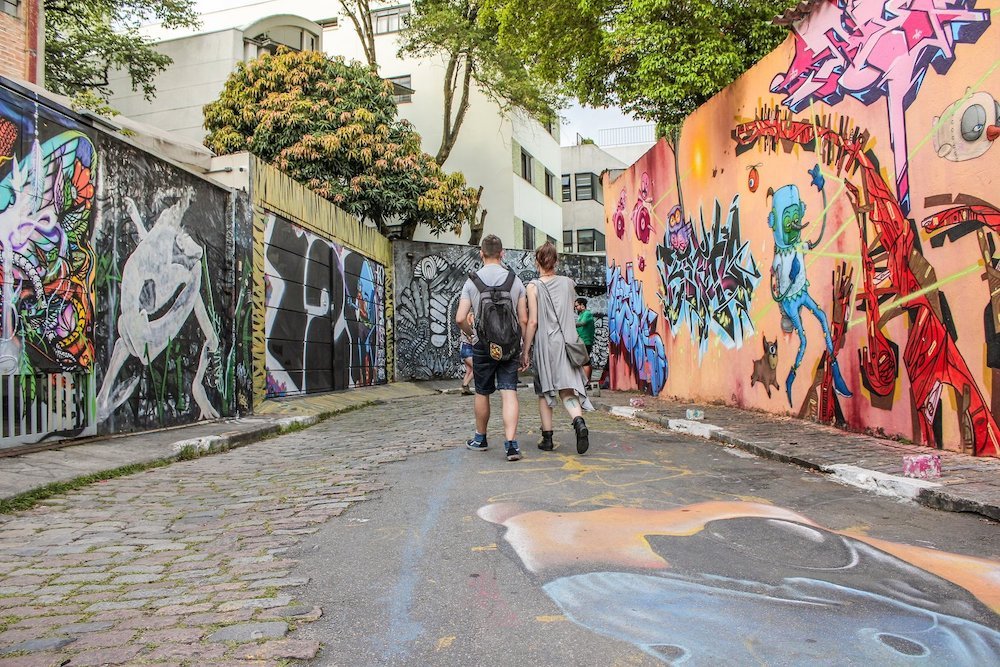
Is São Paulo expensive? Average costs & expenses
São Paulo is pretty cheap compared to most of Western Europe and North America, but it’s quite expensive compared to the rest of Brazil, and many other places in South America.
Nonetheless, midrange travelers can usually get by on $60-100 USD a day (or significantly less if you’re staying in a room instead of an entire apartment or hotel), including accommodation.
Below I’ve included some ranges of costs for typical travel expenses.
Hotels
Expect for a clean and comfortable international standard 3-star hotel to cost $40-100 USD per night.
AirBnB prices have risen significantly, but you can still usually find nice one bedroom apartments for around 40 or 50 USD a night. If you go outside of the most popular neighborhoods, prices drop significantly.
Meals & food
Sit down lunch at a nice restaurant: 30-60 Reais ($6-12 USD).
Casual “prato feito” lunch at a Boteco or Lanchonete: 15-30 Reais ($3-6 USD)
Burger or a sandwich: 15-20 Reais ($3-4 USD).
Street snacks like pastel, coxinha, etc.: 4-8 Reais ($1-2 USD).
Bowl of Açai: 15-30 Reais ($3-6 USD).
Glass of fresh orange juice: 8-15 Reais ($1.50-3 USD).
Alcohol
Figure that a Caipirinha (Brazil’s national cocktail) will cost anywhere from 10 to 35 Reais ($2-7 USD), depending on how fancy the bar you’re at is.
Cocktails will cost similarly, around 15 - 40 Reais ($3-8 USD).
A standard “longneck” - 12 oz bottle of beer - at a bar will cost 8 to 15 Reais ($1.50-3.00 USD).
A 600 ml bottle of beer will cost about the same; 10-18 Reais ($2-4 USD).
A pint of craft beer will run you anywhere from 15-40 Reais ($3-8 USD).
Coffee
An espresso will cost around 5 Reais ($1 USD)
A cup of Brazilian filter coffee is about 2-4 Reais ($0.50-1 USD)
Car rental
$10-30 USD per day for an automatic sedan. SUVs cost significantly more. Domestic agencies like Localiza, Unidas, or Movida are almost always cheaper than big international chains.
Taxi & Uber
Official taxi from Guarulhos airport to city center: 120-150 Reais (about $25-30 USD)
20 minute ride in an official taxi ride within the city: 25-50 Reais ($5-10 USD)
Uber ride from Guarulhos airport to city center: 60-70 Reais ($12-15 USD)
20 minute ride within the city: 15-40 Reais ($3-8 USD)
Public transport
Buses and metro: 4.40 Reais (about $1.00 USD)
Transportation and how to get around
A crowded subway car on the yellow line
São Paulo is definitely not the easiest place to get around. The city’s growth has rapidly outpaced its urban planning, congestion is constant, and traffic jams can even occur on Saturday afternoons.
The public transportation system is good compared to the rest of Brazil, but pretty poor by most standards. While São Paulo has a large metro system, most inhabitants have to rely on buses or a combination of bus and subway.
Consider this: for a city of 12 million people with a metro area of 20 million, São Paulo has just 5 subway lines.
A visit here will certainly require you to use a combination of walking, metro, and uber/taxi. While the bus network is quite extensive, navigating it can be daunting for visitors and buses can be painfully slow (and crowded).
Due to São Paulo’s sheer insane size, even hardcore public transit supporters will find themselves calling an Uber from time to time.
The metro system
São Paulo’s metro consists of 5 lines which service the city center and a decent number of semi-central neighborhoods.
Be aware that stops on each line are few and far between - the distance between two stops can often be more than 30 minutes by foot - and the vast majority of neighborhoods lie far outside its range.
That said, the metro is safe, clean, and relatively efficient. Metro stations and large bus terminals typically have security in them if you encounter a problem.
There are also a number of train lines, referred to as the CPTM, but these are of little use to most tourists.
The metro and buses both cost 4.40 BRL per ride.
Payment for metro tickets must be made in cash and all stations have ticket windows. Visitors cannot get a reusable metro card, so will need to buy single use tickets.
Buses also only accept cash and though they do give change, you must have small bills.
How to plan a visit
Street art in Beco do Batman (Batman’s Alley) in Vila Madalena
São Paulo is not a place where you just wing it and walk around. A visit here needs to be well-planned.
There are few outright obvious tourist sights and the city is enormous and sprawling. Getting around can take far longer than it should and trying to cram visits to distant parts of the city into one day is the perfect way to get stuck in grinding traffic and ultimately see nothing at all.
First time visitors with only a few days should concentrate on the historic center (downtown) and a few neighborhoods around Avenida Paulista. To keep your visit manageable, consider the following neighborhoods as those within the scope of visiting: Centro/Downtown (historic center), Avenida Paulista, Consolação, Bela Vista/Bixiga, Santa Cecília, Jardins, Liberdade, Pinheiros, Vila Madalena, Itaim Bibi, and Vila Mariana.
There is much worth exploring outside of these main areas and some of our favorite non-touristy things to see and do (and eat) are in much more far flung neighborhoods, but with just a few days it’s best not to push it.
In the historic center, the area of interest to tourists lies pretty much in a triangle between the Luz, República, and Sé metro stations. These neighborhoods along with a few others are collectively referred to as the “Centro”.
Sightseeing in São Paulo
Street art in the city center with the Banespa building in the background
It’s important to know that São Paulo preserves almost none of it’s colonial architecture, so don’t come expecting a cute candy colored center like in Salvador, Olinda, or Paraty.
That said, there are some lovely examples of Art Deco skyscrapers and a wild mishmash of architectural styles on display. For fans of brutalist architecture, it’s a paradise. Enormous murals, street art, and graffiti also adorn the sides of countless buildings, effectively turning the center into an open air exhibit.
After decades of decline, recent years have seen a push to “reclaim” and revalue the city center. Many of the city’s most interesting new restaurant openings are here and there are countless great galleries, bars, shops, and cultural institutions. Some of São Paulo’s best nightlife, particularly for those seeking more alternative options, is also here.
The streets are bustling and alive with foot traffic and restaurants and bars spill out onto the sidewalks, which is a distinctly different feeling from the city’s wealthy and car-centric neighborhoods.
Over the city’s history, as the population grew and the importance of the historic center as a place for business and commerce waned, residents and new arrivals began to move into districts ringing the center. This ring has continued expanding exponentially in size and some of the city’s best-kept surprises for eating, drinking, and dancing are in more distant neighborhoods, but save these for your next visit!

Our Local Experts have the answers!
Connect with our Brazil-based travel experts for insider advice, local tips, and help planning a better trip!
What to do in São Paulo
Avenida Paulista on a sunny day
Deciding what to do in São Paulo and how to divide your time is a little different than in other destinations.
The city doesn’t boast many obvious tourist attractions, so you should do some research and come here with a sense of the type of vacation/visit you want to have.
Having a few primary goals makes putting together your itinerary much easier. Though a bit clichéd, think of it in terms of vibes. Are you feeling urban exploring, art & culture, food & drink, party and nightlife, off-the-beaten path and alternative, shopping and leisure, etc.?
Below, I give a general overview of the different types of things to do, and a few of the most popular sights. For much more in-depth information, check out my detailed guide to 25 Things to See & Do in Sao Paulo.
Sights
Your traditional sights are admittedly pretty limited. In the historic center you have an Art Deco skyscraper; the Edificio Altino Arantes (known as the Banespa building or Farol Santander), architect Oscar Niemeyer’s famous Copan building, the Estação da Luz train station, the Patio do Colegio, the Sé Cathedral, the Municipal Market, and the city’s most famous sight; Avenida Paulista.
Outside of the center, the Museu do Futebol, Ibirapuera park, Ponte Estaiada bridge, and Beco do Batman street art alley are your main traditional sights.
Art & Culture
Here there is seriously too much to list. With hundreds of museums and cultural centers there really is no limit to how long you could spend taking in art. The main museums are: MASP - Museu de Arte de São Paulo, Museu Afro Brasil, MAC - Museu de Arte Contemporanea, Pinacoteca, MAM - Museu de Arte Moderna, and MIS - Museu da Imagem e do Som.
You also have the Banco do Brasil Cultural Center and about a million others! For cinema buffs, the Cinemateca Brasileira is a cool visit. The city’s dozen or so SESC cultural centers also often have interesting temporary exhibitions and events.
Nature
São Paulo more than lives up to its name as a concrete jungle, so don’t expect much in this department. Within the city limits you have 3 major options for a jaunt into nature: Ibirapuera park, Serra da Cantareira, and Pico do Jaragua. The Guarapiranga resevoir is a bit of a hidden gem and a nice escape for anyone who wants to spend an hour or two walking or kayaking.
For those who want to hit the beach, you’ll have to go a bit further. The closest escape is to the cities of Guarujá or Praia Grande, each about 1.5 hours away. The port city of Santos has a beach, but not one you want to go swimming at.
For those with more time to get away, the Litoral Paulista (Paulista coast) has fabulous beaches from as nearby as the towns of the “Riviera” all the way up to Ubatuba and the border with Paraty in Rio de Janeiro state. Good rule of thumb - the further north you go, the better the beaches become.
Urban exploring
For those travelers who simply enjoy spending hours walking and wandering, getting a feel for a city’s different neighborhoods, we get you! We feel the same. São Paulo is excellent for this.
A few neighborhoods worth exploring are: Centro (Republica and Sé - avoid Luz, Santa Ifigenia, and Campos Eliseos) Bela Vista/Bixiga, Santa Cecilia, Higienopolis, Bom Retiro, Jardins, Pinheiros, and Vila Madalena. There’s much more to explore, but these neighborhoods will give you a good introduction to the many different Sao Paulos.
Eating
Dining out is a past time in São Paulo and within minutes of arriving you are certain to notice the sheer number of restaurants on every street. You can find everything here, both in terms of cuisine and budget. From street eats to fine dining, you have it all.
Rather than get into a list of restaurants, we’ll just give you a few neighborhoods to focus on: you should plan on trying some modern Brazilian food in Jardins or Itaim, Japanese in Liberdade or Paraiso, Italian in Bixiga or Mooca, traditional counter food and snacks in the City Center, Korean or Jewish food in Bom Retiro, Northeastern/afro-Brazilian food in Republica or the North Zone, and all manner of hipster eats in Pinheiros and Vila Madalena.
You also must be sure to visit a Feira, an outdoor street market/farmers market, where you can try fresh pastel (Brazilian empanadas) and caldo de cana (sugarcane juice).
Food and Dining in São Paulo
The eclectic and delightful restaurant Conçeição Discos in Santa Cecília
The food scene here is hands down the best in the country. Not only is the food significantly better (and much more interesting) than somewhere like Rio, but the service is typically cheerful, quick, and efficient. Things like overcharging or adding items to the bill, which do happen in other cities, is a rarity except for in some clubs and late night bars.
Aside from the dizzying array of regional and modern Brazilian options on practically every street, there are entire neighborhoods dedicated to Japanese, Italian, and Korean cuisine along with buzzing inventive eateries all over the city’s hundred some neighborhoods. Not to even mention the best Brazilian churrascarias (steakhouses) anywhere in the country.
For sushi lovers, you can find Omakase menus prepared by Tokyo-born chefs in Michelin starred restaurants for the price of a couple cocktails in New York.
There’s elegant Amazonian food in Itaim, Italian comfort food in Mooca and Bixiga, Korean barbeque in Bom Retiro, Jewish delicacies just around the corner in Santa Cecília, elevated Brazilian cuisine with ingredients from all over this continent-sized country at high end eateries in Jardins, and Lebanese, Palestinian, and Syrian food on almost every block… The options are truly endless.
For a guide to some of our favorite restaurants in the city, check out our article on 16 of the city’s best restaurants.
Nightlife and partying
A busy bar/boteco on Avenida Berrini in the Brooklin neighborhood
The nightlife in São Paulo is some of the best in the world and unmatched anywhere else in the Americas. Go to New York on a Tuesday night or a Sunday evening and the bars and streets will be practically empty. Not here - in São Paulo every night is a potential party night.
Sundays are for barbecue and live samba starting in the early afternoon, Wednesday nights see office workers blowing off steam in clubs until 4 am, the weekend party begins in earnest on Thursday, and Saturday sessions can begin at lunch and go through Sunday morning.
If you’re worried about whether São Paulo has your style of nightlife, don’t be. From the swanky clubs of Itaim Bibi, to the Samba bars of the Zona Leste (East Zone), drag shows in Bixiga and Republica, heavy metal bars just off Paulista, and the techno and house raves in Barra Funda’s abandoned warehouses, there’s something for every taste. You won’t find a better party anywhere on the planet.
If you’re wondering where to go out in the city, read on. Rather than get into a list of specific places to go, we’ve broken down the distinct vibes of a handful of popular nightlife neighborhoods.
Centro/Bixiga
The city center and Bixiga neighborhoods are popular for live music, LGBTQ-friendly establishments, drag shows, cool cultural events, and casual bars/botecos. It’s a diverse crowd in all senses and you’ll find Paulistas from all over the city. Nightlife around the República area of the center has changed a bit in recent years, but it can still feel pretty seedy.
Itaim Bibi
If you’re looking for brash see-and-be-seen nightlife filled with the city’s wealthy and Instagram elite, head to the glitzy bars and clubs of Itaim, home to the new financial district and one of the city’s wealthiest neighborhoods.
Barra Funda
For ravers, deep house aficionados, and fans of techno and electronic music, make your way to the ex-industrial neighborhood of Barra Funda.
Santa Cecília
With craft beer, artisan cocktails, and overflowing sidewalk parties, Santa Cecília is definitively São Paulo’s hipster hangout. The crowds are always friendly and welcoming, so it’s a great spot to make new friends while bar crawling.
Pinheiros
Pinheiros used to be a commercial district, but has gentrified hard over the last two decades.
For a period, it, like neighboring Vila Madalena, was a center for bohemian Paulistas, but it’s now one of the city’s most desirable neighborhoods and all types of people, from artists (the few who can still afford the rent) to bankers, have made it home. It’s packed with bars ranging from simple to mixologist-approved, and countless botecos and live music venues.
Vila Madalena
Nightlife in São Paulo has expanded beyond just the city center and Vila Madalena, but this neighborhood is still a major party point for Paulistas, expats, and international and domestic tourists.
The attraction is the incredibly dense concentration of establishments all around the intersection of Rua Fidalga and Rua Aspicuelta. If you want to be sure that you’ll find busy bars and clubs (most with live music) any night of the week, Vila Madalena is a safe bet. But this is definitely São Paulo at its most touristy and (for us) least interesting.
Tatuapé
The East side’s answer to Itaim Bibi, Tatuapé is the Zona Leste’s most developed neighborhood and an interesting place for a night out.
The bars and clubs look similar to a lot of what you’ll find elsewhere in the city, but the people are decidedly more racially diverse. This is because the city’s east zone has large black and mixed race populations and with the geographic center of the city over an hour away for many of them, Tataupé has come to function a bit as the east’s epicenter.

Art and culture
An exhibit in the MAC museum
For art lovers, you have over 100 museums, dozens of galleries, pop up installations, art house cinemas, and unparalleled street art.
In terms of architecture, the historic center has preserved almost none of it’s colonial core, but for fans of the modern and brutalist styles, you’ll have a field day. Art Deco towers abound in the city center and modernist buildings by world-famous architects like Oscar Niemeyer and Tomie Ohtake are all around.
Safety in São Paulo
Riot police during a protest in São Paulo
Just about everyone who plans a trip to São Paulo, or anywhere in Brazil, finds themselves asking the question, “Is São Paulo safe?”. And the answer genuinely is yes.
For the average visitor, São Paulo is a safe place to visit. With some common sense and basic precautions the vast majority of visitors have problem-free visits.
Even so, the situation is very different than in major cities in Europe, Asia, much of North America, and even other South American capitals. The fact is that petty and violent crime are a reality in urban Brazil and there are some steps that every visitor should take to keep themselves safe.
In wealthy neighborhoods away from the city center like Jardins, Itaim Bibi, and Pinheiros, the security situation is good and you are unlikely to encounter problems by day or night. Violent crime is rare and most incidents in these neighborhoods are phone and purse snatch and grabs. Nonetheless, it’s best to keep your wits about you, keep your phone in your pocket on the street, and take a taxi at night.
If you’re going to be walking on the street, avoid dressing flashily and do not wear any jewelry or watches (even if of little or no value). If you carry a camera, put it in a bag or backpack when not in use and always scan the area around you before taking it out. The idea is to make yourself as uninteresting as possible to potential thieves.
The city center is a bit of a different story. While well-to-do Paulistanos will often claim that the area north of Avenida Paulista is basically a post-apocalyptic hell scape, this is an undeserved reputation and one born largely out of ignorance (if you press, they’ll generally acknowledge that they haven’t been there in years!). That said, the center does have a lot of homelessness and visible crime and drug use are a reality.
First-time visitors would be well-advised to avoid walking in the city center anytime after dark, especially alone. Even during the day time it’s best to always keep your phone in your pocket (no eyes glued to Google Maps) and only take it out once you’ve entered some sort of a building.
While walking, avoid passing next to and under overpasses (if possible) and don’t cross through alleyways & stairways where you don’t have a clear line of sight to the exit.
Tips to stay safe in São Paulo
Be especially vigilant in the Luz and Santa Ifigenia areas
Special care should be taken in the Luz and Santa Ifigenia areas, both of which have high crime rates and some squares which function as open air drug markets.
Luz houses the wonderful Estação da Luz (Luz train station), the Pinacoteca museum, and Parque da Luz (Luz park), all three of which merit a visit. They lie adjacent to each other and there is always a large and visible police presence, so once there walking from one to the other is fine. While safe, if this is your first time to Brazil or Latin America, the seediness of the area may be a bit… eye-opening.
The Santa Ifigenia area, particularly around Praça da Princesa Isabel, is best avoided at all times.
Avoid purse and phone snatching
When eating at open air restaurants or sidewalk tables, don’t leave your phone on the table or your bag hanging over the chair. Tables at many restaurants have hooks on the underside of the table on which you can hang your bag.
Never stand on the curb or the sidewalk staring down at your phone. Thieves, especially those on bicycles, target unaware pedestrians standing near the street.
Keep your phone in your pocket while walking
While on the street, if you need to peak at your map, take a call, or read your messages, just pop into a nearby shop or restaurant. Owners and staff will know what you’re doing and won’t mind.
Taxis & scams
Scams involving taxis are exceedingly rare, but there are a few things to be aware of.
All taxis in São Paulo must openly display that they are a taxi (it will be very apparent), prominently display the identification of the driver, and must use a visible meter. Never get into a private car that is not obviously a taxi.
When taking taxis always make sure that the meter is turned on. If a driver doesn’t turn the meter on, ask them to stop and get out of the car.
Although not common, one scam some drivers will do when clients pay by card is run a different value on the POS machine than the fare. i.e. if your fare was 50 reais, they might type in 500 or 5,000. If the client notices, they can just claim it was an innocent mistake. If the client doesn’t notice, the taxi driver makes a killing. Some drivers will scratch the screen of the POS machine to make it hard for clients to see the value.
If you’re paying a taxi fare by card (all cab drivers must legally have a POS machine for card payment), be sure to check that the amount on the screen matches your fare. If the screen of the POS machine is all scratched out, thereby making it impossible for you to see the value you are being charged, request a different POS machine.
Be vigilant, but don’t go crazy!
If any of the above has you anxious about your visit, don’t be! São Paulo is consistently ranked as one of Brazil’s safest states and tens of thousands of visitors and tourists enjoy their time here without encountering any issues. The key is to be aware and vigilant while still having fun and enjoying all that Brazil has to offer!


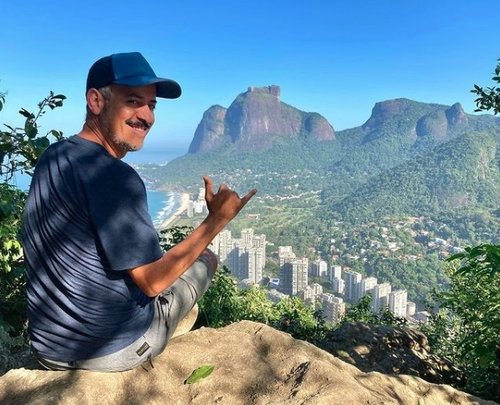

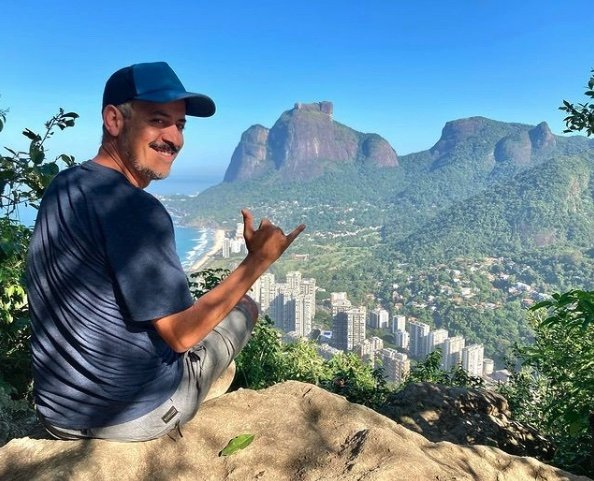
Connect with a Brazil expert





